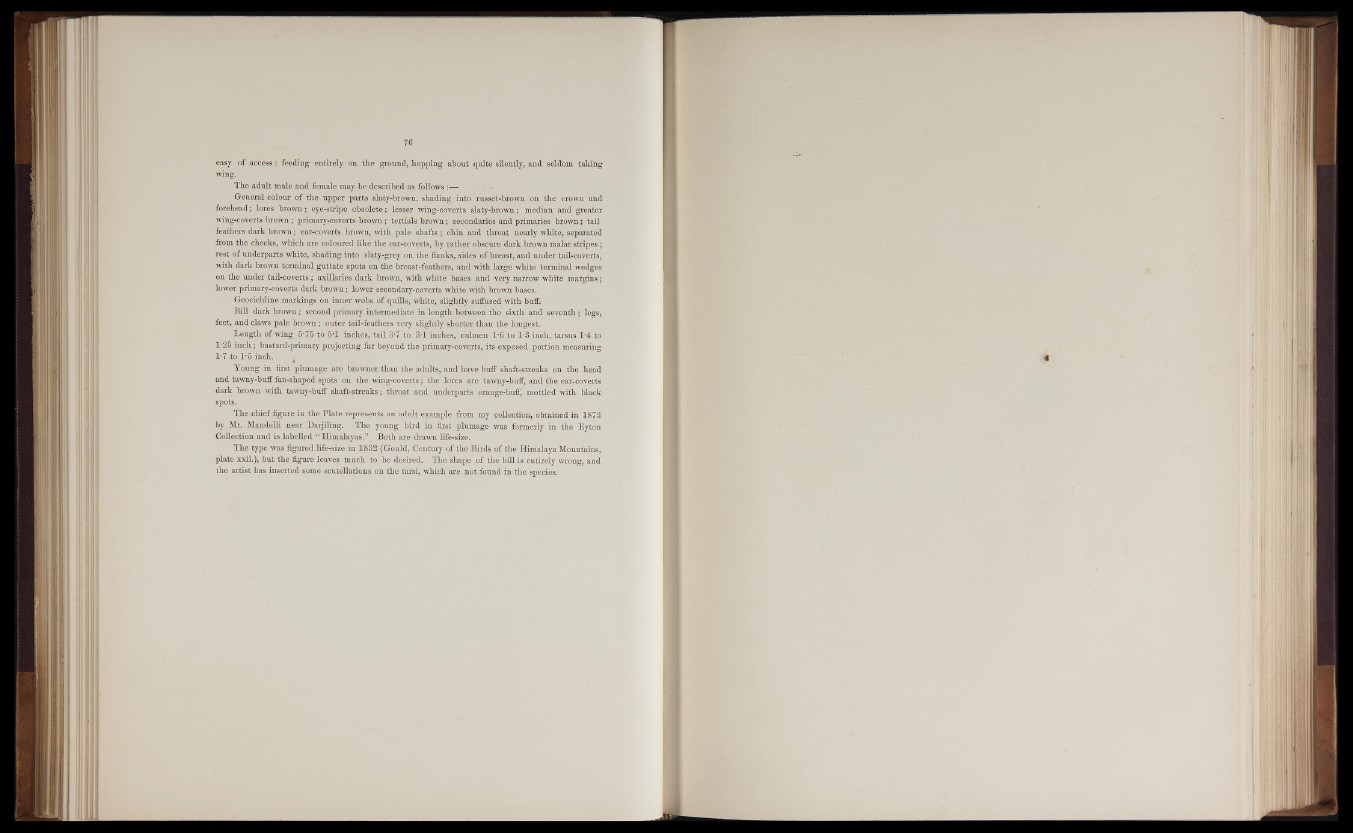
easy of access: feeding-entirely on the ground, hopping about quite silently, and seldom taking
wing.
The adult male and female may be described as foil ows^ ^
General colour of the upper parts slaty-brown, shading into russet-brown on the crown and
forehead; lores brown; eye-stripe obsolete; lesser wing-coverts slaty-brown; median and greater
wing-coverts brown ; primary-coverts brown; tertials brown; secondaries and primaries brown; tail
feathers dark brown; ear-coverts brown, with pale shafts; chin and throat nearly white, separated
from the cheeks, which are coloured like the ear-coverts, by rather obscure dark brown malar stripes;
rest of underparts white, shading into slaty-grey on the flanks, sides of breast, and under tail-coverts,
with dark brown terminal guttate spots on the breast-feathers, and with large white terminal wedges
on the under tail-coverts; axillaries dark brown, with white bases and very narrow white margins;
lower primary-coverts dark brown; lower secondary-coverts white with brown bases.
Geocichline markings on inner webs of quills, white, slightly suffused with buff.
Bill dark brown; second primary intermediate in length between the sixth and seventh; legs,
feet, and claws pale brown; outer tail-feathers very slightly shorter than the longest.
Length of wing 5'75 to 5T inches, tail 3*7 to 3T inches, culmen 1*6 to 1*3 inch, tarsus 1*4 to
1*25 in ch ; bastard-primary projecting far beyond the primary-coverts, its exposed portion measuring
1*7 to 1*5 inch.
Young in first plumage are browner than the adults, and have buff shaft-streaks on the head
and tawny-buff fan-shaped spots on the wing-coverts - the lores are tawny-buff, and the eaf-coverts
dark brown with tawny-buff shaft-streaks; throat and underparts orange-buff, mottled with black
spots.
The chief figure in the Plate represents an adult example from my collection, obtained in 1873
by Mr. Mandelli near Darjiling. The young bird in first plumage was formerly in the Eyton
Collection and is labelled “ Himalayas.” Both are drawn life-size.
The type was figured life-size in 1832 (Gould, Century of the Birds of the Himalaya Mountains,
plate xxii.), but the figure leaves much to be desired. The shape of the bill is entirely wrong, and
the artist has inserted some scutellations on the tarsi, which are not found in the species.